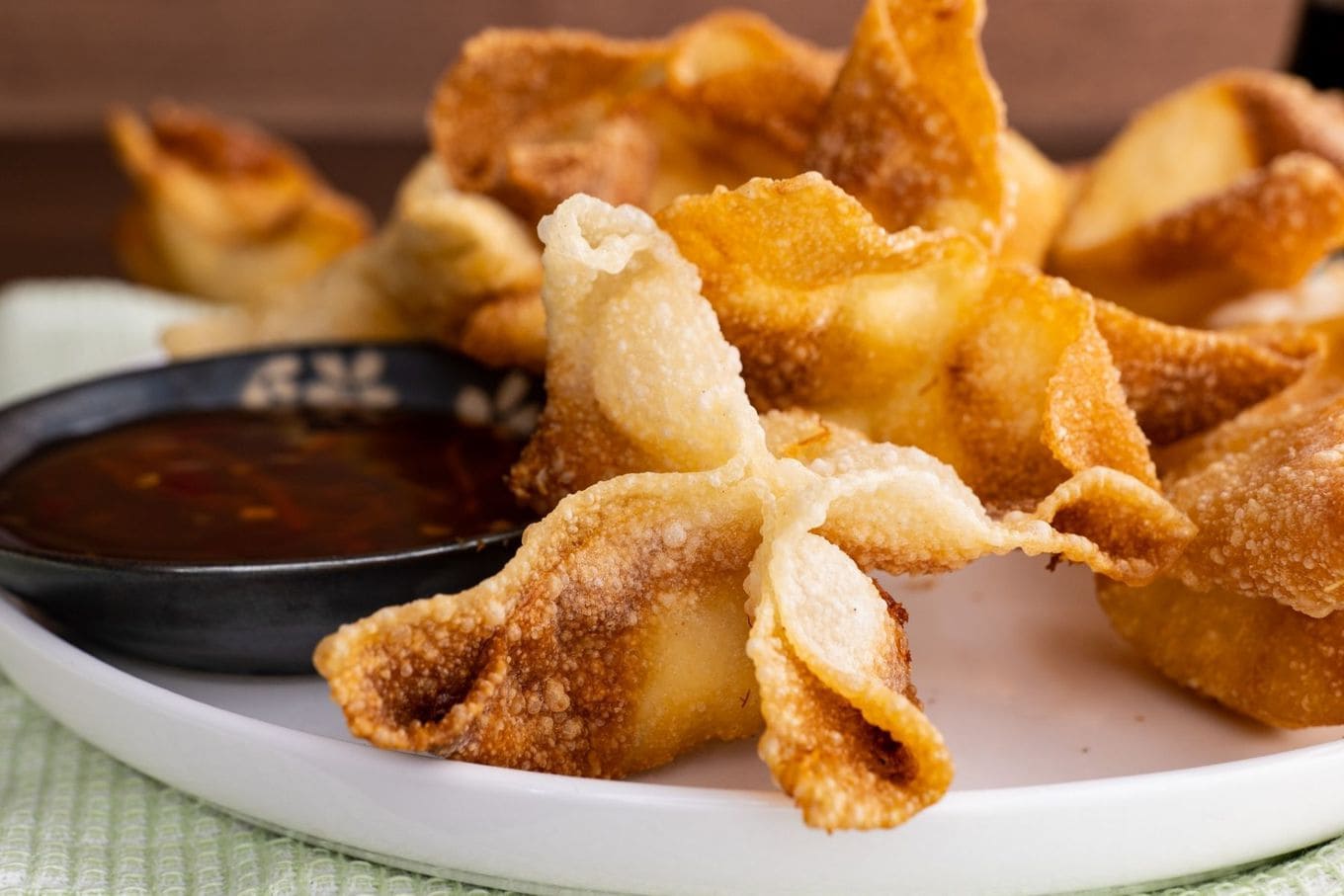Crab Rangoon – the crispy, creamy dumplings filled with crab and cream cheese – have been a staple on American Chinese restaurant menus for over 70 years But behind their popularity lies a geographic incongruity. The name “Crab Rangoon” contains no reference to China whatsoever Instead, it refers to Yangon, the former capital of Myanmar (Burma). So how did this beloved appetizer get such a puzzling name so disconnected from its roots?
A Misleading Moniker
Rangoon was the former name of the city of Yangon, the largest city in Myanmar. Yet the connection between the crab dumplings and Burmese cuisine is non-existent. Crab Rangoon was invented not in Myanmar, but in America.
Calling the dumplings “Rangoon” seems to have been an orientalized marketing tactic. It evoked exciting images of the exotic Far East for curious American diners in the 1950s. While completely inauthentic, the name “Rangoon” sounded much more enticing than “Crab Cream Cheese Wontons”.
True Origins in America, Not Asia
While its name misleads, food historians agree Crab Rangoon originated in the US. Most likely, the appetizer was invented by Victor Bergeron, founder of the famous tiki restaurant chain Trader Vic’s.
In the 1930s-1950s, Bergeron and his chefs experimented with wonton wrappers and fillings. They eventually perfected the winning combination of crab meat and cream cheese. The crispy dumplings debuted as an appetizer at Trader Vic’s Polynesian-themed restaurant in Oakland.
From this experimental origin, Crab Rangoon spread across the country. Soon competing tiki bars copied the dish, as did Chinese-American restaurants. By the 1970s, Crab Rangoon was a standard appetizer on Chinese menus nationwide.
Why “Rangoon”?
So while invented in America, why name the dish after a city in Myanmar? Most likely, Victor Bergeron chose the exotic name “Rangoon” to appeal to American diners’ fascination with tropical culture.
In the 1950s, Trader Vic’s was at the forefront of the tiki trend. Their decor and rum cocktails conjured romanticized images of island life in the South Pacific.
By naming his new appetizer “Rangoon Crab”, Bergeron continued this theme of tropical exoticism. For curious Americans, the name sounded exciting and Oriental. Far more enticing than any geographically accurate title could.
The name “Rangoon” sparked diners’ imaginations, transporting them to far-off lands in the exotic Orient. So while completely inauthentic, the name “Rangoon Crab” perfectly captured the atmosphere Bergeron wanted to create.
Evolution from “Rangoon Crab” to “Crab Rangoon”
Originally called “Rangoon Crab” on menus, at some point the appetizer’s name switched to the now standard “Crab Rangoon.” Likely this change occurred simply because it rolls off the tongue easier.
By the time Chinese-American eateries adopted the dumplings in the 1970s, “Crab Rangoon” had become the conventional name. The new name foregrounded the starring crab ingredient while retaining the exotic allure of “Rangoon.”
An American Classic, Regardless of Authenticity
Though its name bears no genuine ties to Asia, Crab Rangoon has become one of the most iconic Chinese-American dishes. The creamy, crispy dumplings exemplify how Asian cooking techniques adapted to suit American tastes.
The meeting of wonton wrappers with crab and cream cheese created an ingenious hybrid between two culinary cultures. Though born from tiki bars rather than Chinese cuisine, Crab Rangoon found a cherished place in American-Chinese cooking.
So while wholly inauthentic, Crab Rangoon has a distinctive history as a beloved Chinese-American specialty. Its rich decadence has rightfully earned the dumplings a spot in America’s culinary heart.
The puzzling name may not make geographic sense. But one bite of the addictive appetizer makes its popularity easy to understand. However dubious the origins, Crab Rangoon has emerged as a cherished treat on Chinese menus across America.

We need to talk about Crab Rangoon
FAQ
Why do they call it Rangoon?
The name comes from Rangoon, now Yangon, which is the largest city in Myanmar, formerly Burma. I am finding slight disagreement on if Victor himself as claimed by his granddaughter Eve Bergeron (head of marketing and public relations) or if Joe Young, a Chinese-American barback at Trader Vic’s did the actual creation.
Is there real crab in crab rangoon?
While the name suggests otherwise, crab rangoons typically do not contain real crab. Most restaurants use imitation crab meat, also known as surimi, which is a paste made from fish, often pollock or cod, and crab flavoring.
Where does the name Rangoon come from?
Rangoon was the historical spelling, based on the pronunciation of the city’s autonym in the Rakhine dialect of Burmese. It is still widely used. The spelling Yangon, preferred by the Burmese, has also become widely accepted.
Do people in China eat crab rangoon?
“Rangoon” isn’t Chinese either. It’s an archaic name for Burma’s capital. But crab Rangoon isn’t Burmese either. It’s a purely American dish, believed to have been invented by Victor Bergeron, proprietor of the tiki bar Trader Vic’s, during the post-World War II craze for “exotic” cuisine.
